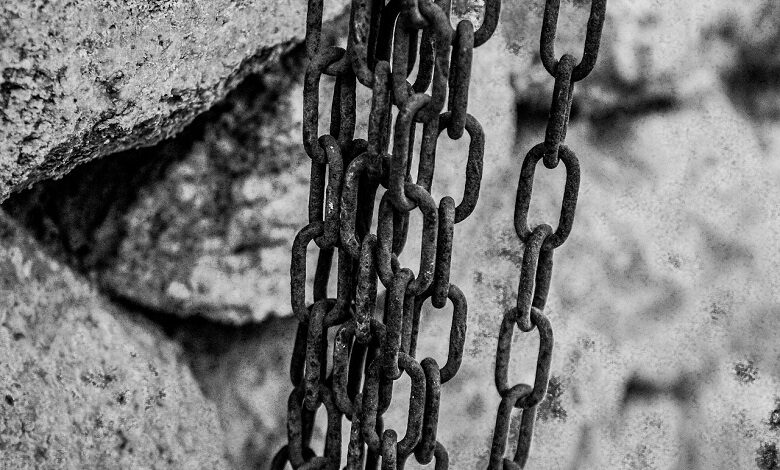How Africans are taken to the New World

The European colonialists required free labor to conquer America. For the role of slaves, Africans were forced into slave with the help of their tribal men. Some Sub-Saharans, mainly West Africans, captured were transported into the New World, and forced into hard labor.
Colonization of America
Beginning in the 15th century, Europe owned the territory of the present United States of America. The central colonizing countries were Portugal, France, the Spanish and British empires. And it will take more than one century before the situation changes radically and the mainland gains independence.
In the 15th century, in southern North America, the main activity was agriculture, requiring many hardy workers. Even then, slavery actively practices by whites, or, as they called at that time, contracted people, among whom were mainly the English and Irish poor – ruined peasants and artisans. However, this was not enough.
In the middle of the century, Europeans were beginning to develop the territory of Africa and, using their technical superiority, to captivate people for further sale. A particular agency creates to collect future slaves and trade with them. Over time, the organization covered the entire continent. Among their “partners” were local leaders who sold either their fellow tribesmen or members of neighboring “hostile” groups.
The captured people were tied up in twos and led through the woods to the coast. Their buyers were already waiting for them. To check the condition of the slave, the captains forced them to move their fingers, hands, legs, and the whole body to make sure that no one had fractures. If there were not enough teeth, then the slave was given a lower price.
Each African was worth roughly 100 gallons of rum, 100 pounds of gunpowder, or $18-20. Women under 25, pregnant or not, were worth the total price, and after 25, they lost a quarter of the cost.
Several slaves send on boats to the ship. Onboard they were divided into groups: men load into one compartment, women into another. Children left on deck altogether. The slave’s transport on special ships, the holds of which could hold more “live goods.”
Small sailing ships of that time transported 200, 300, even 500 slaves in one voyage. And at least 600 people loaded onto a boat with a displacement of 120 tons. As the slave traders themselves said, “a negro should not occupy more space in the hold than in the coffin.”
The first slaves from Africa
In 1619, the first black slaves were brought into the present-day United States of America territory. Over the next 50 years, they drove out the white bondage servants, who left a very short mark in history. There were enough reasons for this: Africans were cheaper for the slave owners, they could be exploited all their lives, and not until the end of the contract. Also, no one cared about people with dark skin. Simultaneously, their tribes always sided with the indigenous people of America; the Indians and other Europeans with a higher position in society took the side of white servants.
The black slaves imported into America were mainly inhabitants of the west coast of Africa; a much smaller part belonged to the tribes of the central and southern parts of the continent and North Africa and the island of Madagascar.
Among them were people of the Fulbe, Wolof, Yoruba tribes, Ashanti, Fante, Hausa, Dahomey, and Bantu. It did not matter what family the African belonged to – there, in the dirty, cramped barracks on the trading posts, they were all equal, humbly awaiting the arrival of the slave ships.
The ships sailed across the ocean in 3-4 months. All this time, the slaves were in terrible conditions: they shackle with weighted shackles, the holds were very cramped, unsanitary conditions reigned, and they had to relieve themselves in the hold. Food and water were scarce.
“The horror of what is happening on these ships,” said one of his contemporaries, who himself survived a similar journey, “stench, fumes, vomiting, various stages of seasickness, fever, dysentery, abscesses, scurvy. Many die a terrible death.”
The captain and crew often raped young girls. Many fights arose between men when they tried to fit on the floor to lie more comfortably. Then the overseer’s whip went into action, and all strife ceased. Also, the slaves had their nails cut short not to tear each other’s skin.
New life
Upon arrival in America, the slaves were fed and treated to give them a “marketable” appearance and then brought to the market. The prices for slaves depended on the conjuncture. For example, in 1795, an African brought in cost $300, by 1849 – $900, and on the eve of the civil war, $1,500 – $2,000.
Slaves were imported mainly for the tobacco and cotton plantations of the southern states. Africans drive out to work in batches; they worked up to 18 – 19 hours a day, driven by the scourge of the overseer. At night, the slaves lock up, and the dogs were let down in the area so that people would not have the temptation or the opportunity to escape.
However, the most courageous could not keep – there were more and more runaway slaves, so in 1850 a law was passed that allowed and forced the search for runaway slaves throughout the continent, even where slavery had already been abolished. For a slave to consider a fugitive, it was only enough for any white European to declare and confirm under oath that this African was a slave who had fled from him.
The average life expectancy of a slave in such conditions was only 7 – 10 years. The few who were servants, cooks, and nannies fared slightly better.
Slaves had no rights and freedoms and considered the property of the owner: the same property as a horse in a stall or an extension to a house. The owner could do whatever he wanted with them because this was not punishable by law; moreover, it was even encouraged.
Slaves were forbidden to learn to write, read, and at least somehow show their mental abilities; they were not allowed to walk in groups of more than seven people unaccompanied by a white person. If someone catches on the street in Virginia after 9pm, they immediately sentence to quartering.
The ears of a slave who had fled and seen cut off, and the hands and feet of his children cut off for unfulfilled work. If desired, the slave owner could kill his slave.
Fight for rights
During the XVlll century, there were at least 150 slave revolts. Almost every plantation had its armory and kept guard units in case of danger. One of the most significant uprisings took place in 1739, then more than 200 slaves managed to destroy several dozen houses, burn most of the harvest and kill several planters.
In 1936 – 1938, American writers, participants in the so-called Federal Writing Project, commissioned by the government, recorded interviews with former slaves, who were more than 80 years old. As a result, the “Collection of Tales of Former Slaves” was published, which tells about the varied experiences of people – some were more fortunate, some less.
“They didn’t teach us anything, and they didn’t let us learn. If they saw that we were learning to read and write, they would cut off our hands. We were not allowed to go to church either. Sometimes we ran away and prayed together in an old house with an earthen floor. There we rejoiced and shouted, and no one heard us because the earthen floor drowned out, and one man stood at the door. We were not allowed to visit anyone, and I saw Jim Dawson, Iverson Dawson’s father, tied to four stakes. They laid him on his stomach and stretched his arms out to the sides, and tied one hand to one stake and the other to the other. The legs were also stretched out to the sides and tied to the stakes. And then they began to beat with a board – the same as they put on the roof. Niggers and then come back at night and on the sheet carried him home, but he is not dead. He accuses of going to a neighboring plantation at night. At nine o’clock we were all supposed to be home. The elder came and shouted: “Hang up! Hang up! Everyone goes home, and the doors are locked!” And if someone didn’t walk, they beat him,” says 91-year-old George Young (Livingston, Alabama).
Nicey Pugh’s recollection (85 years old, Alabama): “Life among the blacks was then happy. Sometimes I want to go back there. As I see now that glacier with butter, milk, and cream. As a stream murmurs over the stones, and above it the willows. I hear the turkeys cackling in the yard, the chickens running and bathing in the dust. I see a creek next to our house and cows who have come to drink and cool their feet in shallow water. I was born into slavery, but I was never a slave. I worked for good people. Is this called slavery, white gentlemen?”
More than one decade will pass, and only in 1964 – 1968, African Americans will officially receive rights and freedoms on an equal basis with white people.




